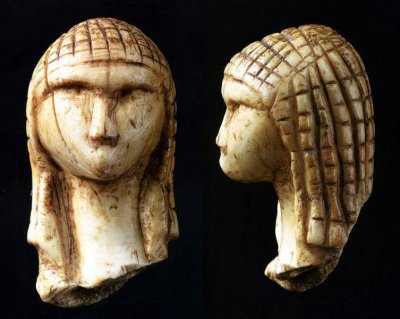Dating that doesn’t damage
A new method for determining the age of ancient mummies, old artwork and other relics which does not cause damage to these treasures of global cultural heritage has been developed.
|
|
The method could allow scientific analysis of hundreds of artefacts that, until now, have been off limits because museums and private collectors did not want the objects damaged.
“This technique stands to revolutionise radiocarbon dating,” said Marvin Rowe, PhD, who led the research team. “It expands the possibility for analysing extensive museum collections that have previously been off limits because of their rarity or intrinsic value and the destructive nature of the current method of radiocarbon dating. In theory, it could even be used to date the Shroud of Turin.”
Rowe explained that the new method is a form of radiocarbon dating, the archaeologist’s standard tool to estimate the age of an object by measuring its content of naturally occurring radioactive carbon. A professor emeritus at Texas A&M University College Station, Rowe teaches at a branch of the university in Qatar. Traditional carbon dating involves removing and burning small samples of the object. Although it sometimes requires taking minute samples of an object, even that damage may be unacceptable for some artefacts. The new method does not involve removing a sample of the object.
Conventional carbon dating estimates the age of an artefact based on its content of carbon-14 (C-14), a naturally occurring, radioactive form of carbon. Comparing the C-14 levels in the object to levels of C-14 expected in the atmosphere for a particular historic period allows scientists to estimate the age of an artefact. Both the conventional and new carbon dating methods can determine the age of objects as far back as 45,000 to 50,000 years, Rowe said.
In conventional dating methods, scientists remove a small sample from an object, such as a cloth or bone fragment. Then they treat the sample with a strong acid and a strong base and finally burn the sample in a small glass chamber to produce carbon dioxide gas to analyse its C-14 content.
Rowe’s new method, called ‘non-destructive carbon dating’, eliminates sampling, the destructive acid-base washes and burning. In the new method, scientists place an entire artefact in a special chamber with a plasma, an electrically charged gas similar to gases used in big-screen plasma television displays. The gas slowly and gently oxidises the surface of the object to produce carbon dioxide for C-14 analysis without damaging the surface, he said.
Rowe and his colleagues used the technique to analyse the ages of about 20 different organic substances, including wood, charcoal, leather, rabbit hair, a bone with mummified flesh attached and a 1350-year-old Egyptian weaving. The results match those of conventional carbon-dating techniques, they say.
The chamber could be sized to accommodate large objects, such as works of art and even the Shroud of Turin, which some believe to be the burial cloth of Jesus Christ, Rowe said. He acknowledged, however, that it would take a significant amount of data to convince museum directors, art conservators and others that the new method causes no damage to such priceless objects.
The scientists are currently refining the technique. Rowe hopes to use it, for instance, to analyse objects such as a small ivory figurine called the Venus of Brassempouy, thought to be about 25,000 years old and one of the earliest-known depictions of a human face. The figurine is small enough to fit into the chamber used for analysis.
Funding for this project is provided by the National Science Foundation, the National Center for Preservation Technology and Training, and Texas A&M University.
MRI scanner to advance medical breakthroughs at Monash
Siemens Healthineers' MAGNETOM Cima.X 3T is claimed to be Victoria's most advanced,...
Virtual pathology streamlines rapid onsite evaluation
Technology from Grundium, a specialist in digital imaging for pathology, has been shown to match...
Cannabis detected in breath from edibles
Researchers say they have made the first measurement of THC in breath from edible cannabis, in a...




